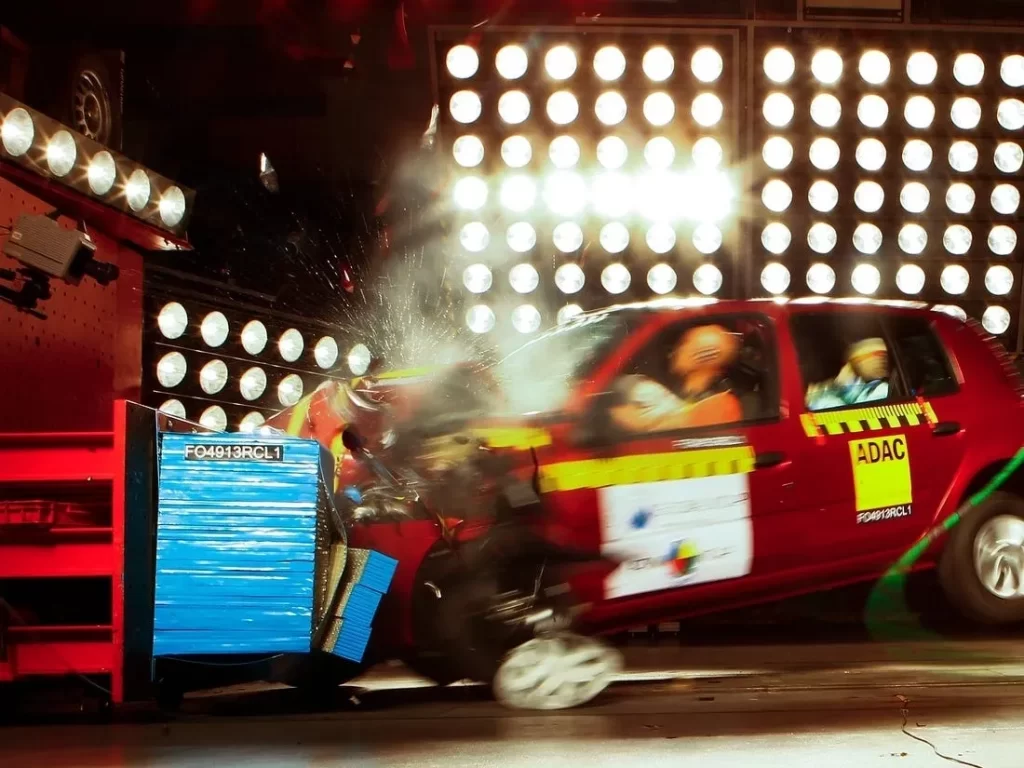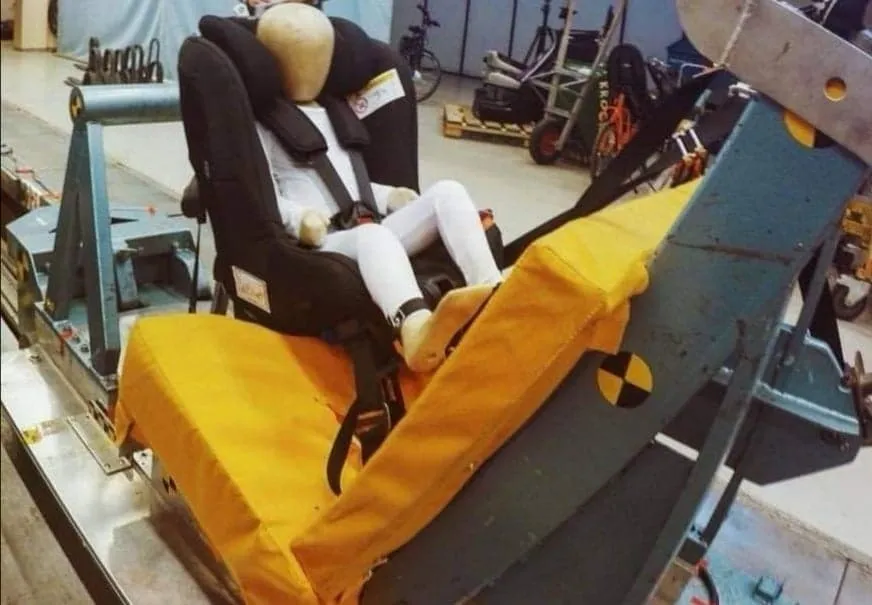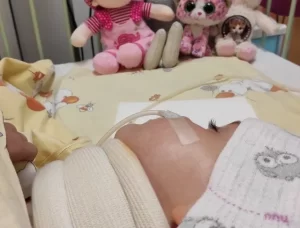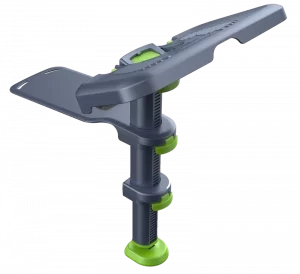All car seats have to conform to safety standards and pass a regulation test (either ECE R44/04 or R129) for them to be sold legally.
ECE R44/04
The R44 safety regulation has its roots in the 1980s with somewhat outdated basic safety tests. The current updated version of R44 is ECE R44/04 which came into effect in 2005, and only requires a 32mph frontal and 18mph rear impact test. Since 2009 child car seats have to also pass the roll over simulation test (with the introduction of the R16 amendment to the regulation). R44/04 test used old style basic dummies that had only 4 sensors (called “P-dummies”) to carry out the tests.
Although side-impact accidents make up around 25% of collisions, the old regulation doesn’t test how a child car seat and its occupant will react in this type of accident.
Regulation R129/ i-Size
This regulation came into force in July 2013 and requires the same impact tests as ECE R44/04 with the addition of a side impact test at 15mph. The R129 uses much more advanced Q-dummies that have 32 sensors. The new popular i-Size regulation is a part of the Regulation R129.

ADAC
ADAC is an organization representing the interests of car owners in Germany which organizes tests of child car seats. Every year, Stiftung Warentest organises the most comprehensive car-seat test in Europe together with ADAC and the ICRT (International Consumer Research Organization that also owns the Euro Ncap test). The ADAC test is published in many consumer magazines such as “Which” in England, “Råd och Rön” in Sweden and “Die Autowelt” in Germany. The tests conducted are approximately 50% more stringent and stipulate stricter requirements than the ECER44/04 standards. The ADAC test is a composite test meaning that the test consists of more than one criteria. The 3 major test criteria in the ADAC test are tested and weighted according to Safety (50%), Operations (40%) and Ergonomics (10%). For a seat to reach a good overall score, it must perform well in all three parts of the test. Rear facing seats with belt attachments usually perform well in the crash test aspect of the ADAC but fail to reach a good overall score due to the poor review they receive in the handling part of the test. ADAC strives to mimic reality as much as possible in their test. They use higher speeds than the R129 /i-Size certification test and measure both frontal and side impact collisions in a real car chassis instead of a test sled. The ADAC test requires a front impact test at 40mph and side impact test at 31mph using Q-dummies.
PLUS TEST
The Swedish Plus Test was introduced by VTI and NTF in 2009, as a replacement of earlier strict T-Test. This test provides a “stamp of quality” for seats. The Plus Test has such strict requirements that forward facing child car seats would not be able to comply its standards. The notion behind the test is that a child sitting in a child car seat that is Plus Test certified would not sustain any serious/life-threatening injuries in a collision. The Plus Test is the hardest test that exists today and the only test that guarantees that your child will not be exposed to excessive forces on the neck which would threaten his life during a collision. It has been demonstrated that a child cannot withstand a neck-load greater than 130 kg and in the Plus Test this force is measured using a maximum allowed limit of 122 kg. This test is conducted at 35mph with a much shorter braking distance which makes the impact on the car seat much more violent since, the shorter the braking distance, the greater the deceleration and, therefore, the more intense the forces are on impact.
Not only does a higher speed and shorter braking distance make it more difficult to pass, but the forces exerted on the neck of the “dummy” are also carefully measured by sensors, which means that the forward-facing car seats will not pass this test as the forces exerted on the neck are too great. In forward facing car seats, the impact on the neck-load in a frontal collision can be so severe as to cause internal decapitation, as front facing car seats allow for up to a 2 inch stretch in the spine, when only one quarter of an inch would have this catastrophic effect.
In European homologation (EU regulation), the child car seats are subjected to different crash tests (for the ECE R44 front and rear impact tests are carried out, the R129/i-Size also now demands a side impact test). However, the Plus Test is the only test that takes into account the forces exerted on the child’s neck at the moment of impact.








